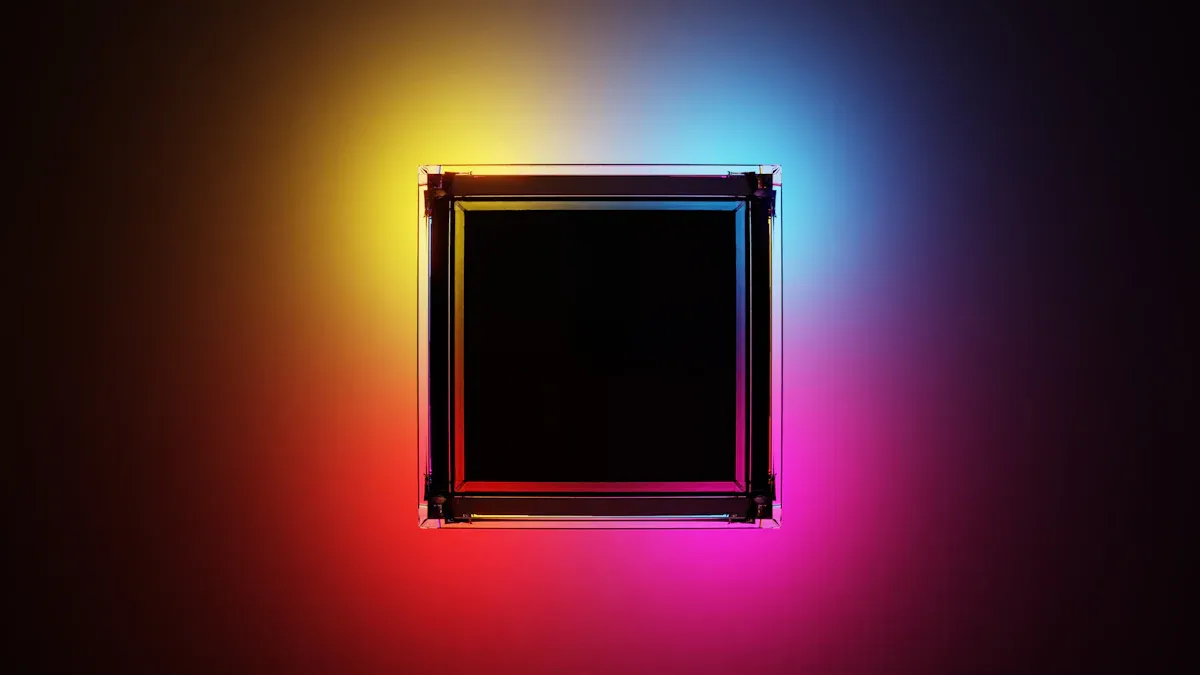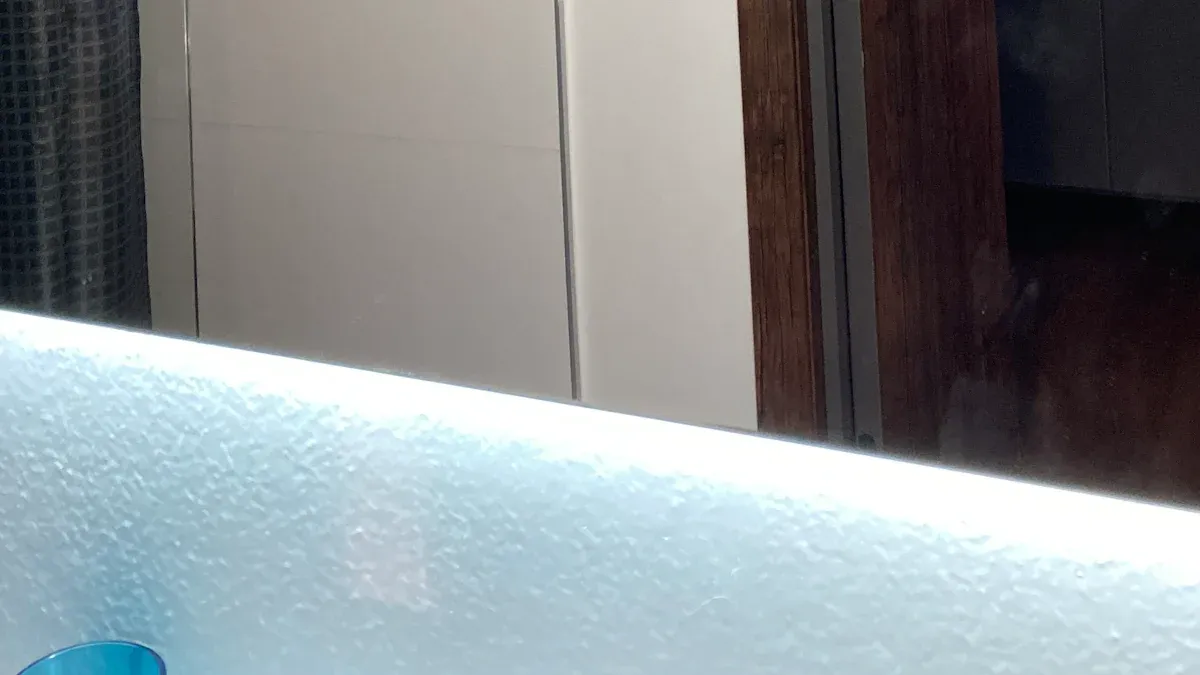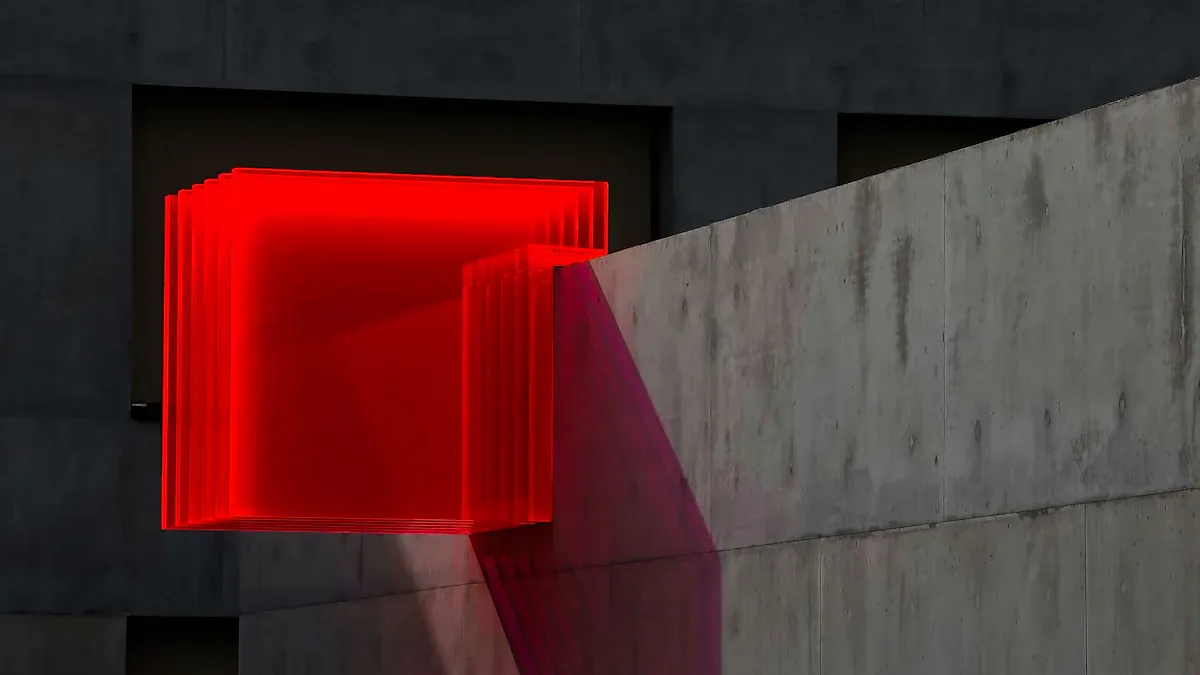Acrylic Frame LED Light Box Comparison: Frameless vs. Framed Designs for Different Spaces

Acrylic LED light boxes come in two main types: frameless and framed. Frameless designs look smooth and modern, making them ideal for a crystal LED light box display that enhances the ambiance of any space. On the other hand, framed designs are stronger and last longer, perfect for a lightbox billboard that needs to withstand the elements. Each type offers a different aesthetic, so consider your space and needs before making a choice. For example, frameless lightboxes provide a soft, even glow, which is great for simple, modern rooms. Framed lightboxes are tougher, making them suitable for busy places or outdoor areas. Whether you need a clear LED display for a store or a lightbox sign for advertisements, selecting the right type ensures the best look and lighting effect.
Key Takeaways
Frameless LED light boxes look modern and are simple to use. They work well in stylish places.
Framed LED light boxes are strong and great for busy or outdoor spots. They protect displays better.
Think about your space and needs before picking a light box. Frameless ones look modern, while framed ones are more practical.
Some framed light boxes have features like auto-brightness and Wi-Fi. These make it easy to change displays.
Your budget is important. Frameless light boxes cost more but look fancy. Framed ones are cheaper and last longer.
Frameless LED Light Box Designs

Characteristics of Frameless LED Light Boxes
Frameless LED light boxes look modern and stylish. They are made with slim aluminum, making them light and easy to move. These lightboxes use SEG (Silicone Edge Graphics) channels to hold fabric graphics smoothly. This design hides edges, giving your display a neat and professional finish.
They are thin, only 28.79mm thick, and come in sizes from 76mm x 76mm to 2400mm x 1200mm. They work well in temperatures from -20° to +60°, so they fit many places. With wide beam angles, they spread light evenly across the display. They also save energy and come with strong warranties for long-lasting use.
Tip: Choose frameless LED light boxes if you want something light, simple to set up, and with steady lighting.
Aesthetic Appeal of Frameless Backlit Light Boxes
Frameless designs make your artwork the main focus. Backlit lightboxes with SEG technology show bright colors and clear details, making displays pop. Without a frame, they look modern and clean. These lightboxes work great in darker spaces, where the backlight makes visuals shine.
Many businesses pick frameless designs for their polished look. The smooth graphic setup makes branding appear high-quality. Whether for art or ads, frameless lightboxes improve how your display looks.
Common Use Cases for Frameless Lightboxes
Frameless lightboxes can be used in many places. Stores use them to make displays that grab attention. Exhibitions and trade shows use them to show off products clearly. Offices use them to display branding or inspiring artwork.
E-commerce stores also use frameless lightboxes to improve their physical spaces. Adding these lightboxes helps connect online and in-store experiences. They are light and easy to install, making them great for temporary or changing setups.
Note: Over 60% of shoppers care about eco-friendly products. Frameless lightboxes made with green materials are perfect for businesses that care about the environment.
Framed LED Light Box Designs

Characteristics of Framed LED Light Boxes
Framed LED light boxes are strong and full of features. They are great for many places and uses. These lightboxes can show changing pictures or messages easily. Many have Wi-Fi or Bluetooth, so you can update them from far away. This helps you quickly change displays for new ads or events.
Here’s a table showing key features of framed LED light boxes:
Feature | What It Does |
|---|---|
Changing Content Display | Shows different pictures or messages for flexible use. |
Wi-Fi and Bluetooth | Lets you update displays without being nearby. |
Works with Other Systems | Connects to digital signage tools for easy control. |
Auto Brightness Adjustments | Changes brightness based on the room’s light. |
Saves Energy | Uses less power to save money and help the planet. |
Checks Itself | Finds problems early to fix them faster. |
These features make framed lightboxes dependable and easy to use.
Aesthetic Appeal of Framed Backlit Light Boxes
Framed backlit light boxes look neat and professional. The frame keeps the artwork safe and makes it stand out. The backlight makes colors brighter and more eye-catching. This design is great for places needing both style and usefulness.
The frame gives a clean, finished look. It works well in busy areas where things need to stay protected. Whether for art or ads, framed lightboxes make your display the main focus.
Common Use Cases for Framed Lightboxes
Framed lightboxes work in many places. Stores use them to show sales or new items. Offices use them for branding or sharing messages. Museums and galleries pick them to protect and light up art while looking classy.
They are also great for outdoor spaces. Their strong build handles bad weather, making them good for billboards or public ads. If you need something tough and nice-looking, framed lightboxes are a smart choice.
Lightbox vs Infinity Frame: Key Comparison Factors
Aesthetics and Design
Lightboxes and infinity frames look very different. Lightboxes use backlighting to make colors bright and details clear. Infinity frames don’t have backlighting, so they look more traditional. This makes them better for places needing a simple, calm style.
Here’s a quick look at their design differences:
Design Factor | Lightbox | Infinity Frame |
|---|---|---|
Depth | 3 inches | Less than 3 inches |
Weight | Heavier due to depth | Lighter due to shallower design |
Price | Usually higher | Usually lower |
Visual Impact | Backlighting makes artwork stand out | Standard display without backlighting |
If you like a modern, clean look, pick an edge-lit lightbox. It fits well in sleek, stylish spaces. Infinity frames, however, have decorative touches that match many styles.
Functionality and Durability
Lightboxes have more features. Some adjust brightness automatically or connect to digital tools. These features make them great for changing ads or displays. Infinity frames are simpler but last longer because they are lightweight and compact.
Good LED lightboxes can last 15 years if used 12 hours daily. With heavy use, the warranty drops to 7 years. This shows they are strong and reliable. Infinity frames don’t need much care and rarely have problems since they don’t use lights.
Space Suitability for Backlit Light Boxes
Your space decides which is better: a lightbox or infinity frame. Lightboxes are great for showing off art or ads. Their backlighting makes visuals stand out, even in darker rooms. Infinity frames work better in small spaces or where a simple look is needed.
In big spaces, a backlit lightbox grabs attention and improves the room’s feel. Infinity frames are lightweight and easy to hang in tight or tricky spots. Think about your space and the look you want before choosing.
Cost Considerations for Frameless and Framed Designs
When picking between frameless and framed LED lightboxes, knowing the cost helps. Each type has special features, and their prices match their benefits.
Frameless lightboxes usually cost more. Their smooth, modern style and advanced tech, like Silicone Edge Graphics (SEG), make them pricier. These are great for fancy spaces needing a clean, polished look. The rising popularity of frameless designs is similar to trends in frameless shower doors. These are expected to grow from $5.12 billion in 2024 to $9.80 billion by 2033. This shows people like simple, stylish designs that are easy to care for.
Framed lightboxes are cheaper. Their strong frames make them last longer, which is good for busy areas or outdoor use. They don’t look as seamless as frameless ones but are tough and worth the money. Features like Wi-Fi and auto-brightness can raise the price. However, these extras make them easier to use and maintain over time.
When comparing lightboxes to infinity frames, costs depend on your needs. Infinity frames are simpler and cost less, so they’re good for small budgets. But they don’t have the bright backlight that makes lightboxes stand out. If you want your display to shine, spending more on a backlit lightbox is worth it.
To decide, think about your budget, how you’ll use it, and the look you want. Frameless lightboxes fit modern, fancy spaces. Framed ones are better for durable, affordable options in practical settings.
Choosing the Right LED Light Box for Your Space
Understanding Your Space and Needs
Picking the right lightbox starts with knowing your space. Look at the size and layout of the area. Frameless LED light boxes are great for modern, simple spaces. Framed designs work better in places needing strength or a classic style. Think about what you want to show. Are you displaying art, advertising, or improving the mood? Each goal might need a different frame or brightness level.
Lighting affects how people feel in a space. Bright areas grab attention and make people feel welcome. A mix of bright and dim lights adds interest. The Color Rendering Index (CRI) helps items look their real colors. This builds trust and makes your display more effective.
Tip: Use backlit lightboxes in dark areas to make visuals stand out.
Balancing Style and Usefulness
A good lightbox should look nice and work well. Frameless designs are sleek and modern, perfect for fancy spaces. Framed lightboxes are stronger and better for busy or outdoor areas. Backlighting makes colors brighter and more eye-catching.
Think about how the frame fits your decor. Frameless lightboxes blend into modern rooms. Framed ones add strength and structure. Features like auto-brightness or Wi-Fi make displays easier to manage.
Note: If you change displays often, pick a lightbox with digital features for easy updates.
Thinking About Costs
Your budget is important when choosing a lightbox. Frameless lightboxes cost more because of their advanced design. They are worth it for spaces that need a stylish look. Framed lightboxes are cheaper and last longer, making them good for practical uses.
Here’s a table showing lightbox trends by region:
Region | Key Insights | Growth Rate |
|---|---|---|
Europe | High demand in fashion and hotels; focus on custom ads. | Around 5% CAGR |
Asia-Pacific | Fast growth in China and India; rising incomes boost demand. | Rapid growth |
Latin America | Slow adoption in cities; experiential marketing is growing. | Promising potential |
Middle East & Africa | Mix of old and new styles; demand in luxury retail and hotels. | Unique growth trends |
When choosing, compare the cost to the benefits. Frameless lightboxes cost more but give a polished, modern look. Framed ones are durable and versatile, offering long-term value.
Frameless and framed LED light boxes have different advantages. Frameless ones look modern and stylish, while framed ones are strong and sturdy. Think about your space and decide if you want a simple design or a tough frame for busy areas. Also, check how the light improves your display and if features like auto-brightness are helpful.
Your budget matters too. Frameless lightboxes are more expensive but make spaces look fancy. Framed lightboxes cost less and are useful. Pick the one that fits your needs and space for the best outcome.
FAQ
What makes frameless and framed LED light boxes different?
Frameless LED light boxes look modern with no visible edges. Framed ones are stronger and have a solid, structured design. Pick frameless for style and framed for durability.
Can frameless LED light boxes be used outside?
Frameless light boxes are best for indoor spaces because they are lightweight. Framed light boxes are better for outdoor use since they handle weather well.
How should I care for an LED light box?
Wipe the surface gently with a damp, soft cloth. Don’t use strong cleaners. For framed boxes, check the frame for any damage. Frameless ones might need new graphics sometimes.
Tip: Cleaning and checking your light box keeps it working well.
Are LED light boxes good for saving energy?
Yes, LED light boxes use less power than regular lights. They also last longer, saving money on replacements. Some models have features like auto-brightness to save even more energy.
Which light box works best in retail stores?
Frameless light boxes are great for modern stores with sleek designs. Framed light boxes are better for busy areas because they are tougher. Think about your store’s look and how busy it gets before choosing.
Note: Frameless light boxes give a fancy look, while framed ones are more practical.
See Also
Evaluating Acrylic Materials for Light Boxes: Durability and Aesthetics
Exploring Acrylic LED Light Boxes: Varieties, Uses, and Setup
Choosing Acrylic Light Boxes: Uses, Advantages, and Guidance
Energy-Saving Acrylic Box Lights for Contemporary Lighting Needs
Guidelines to Select the Ideal Acrylic Light Box Frame in 2025

